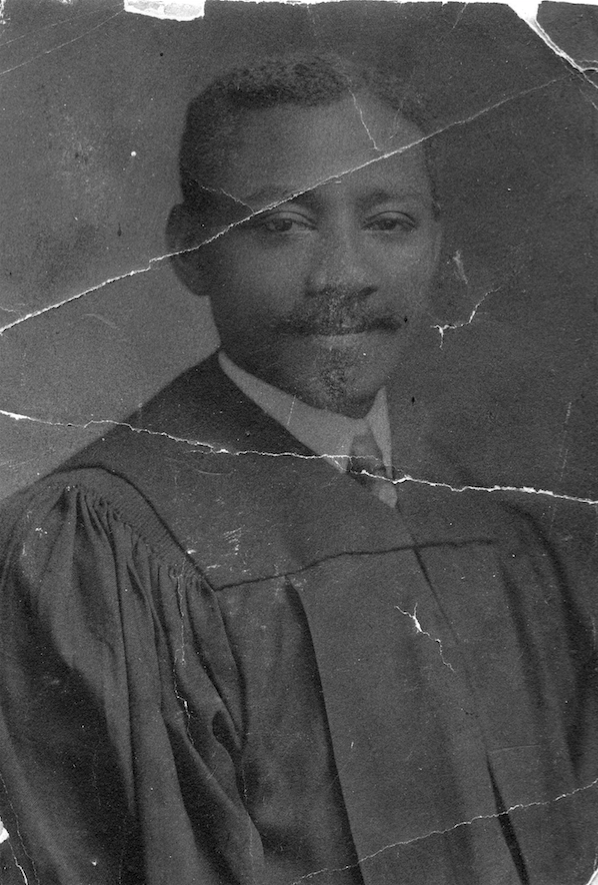In 1910, Dr. William Green Torrence established Torrence Hospital, Asheville’s first black clinic, operating out of his Eagle Street home. The following year, the doctor relocated his family as well as his practice to 95 Hill St. According to Freeman Irby Stephens’ 2013 book, The History of Medicine in Asheville, Torrence also maintained an office in the YMI building, “in addition to being a consultant at Dr. John Walker’s Circle Terrace Sanatorium.”
Asheville’s 1915 city directory features a half-page advertisement for Walker’s sanatorium. The announcement reads:
“This is believed to be the only institution in the world for the exclusive treatment and care of tuberculosis for COLORED PEOPLE. Situated in the most perfect all-the-year-round climate that can be found for treatment of tuberculosis.”
The promotion went on to note the operation’s strict sanitary laws, as well as its many amenities. These included: electric lights, call bells, a telephone, baths and “other modern improvements.” The facility also offered its patients “[a]mple porches with south-eastern and south-western exposure.”
According to a Department of Commerce and Labor report, in 1909, tuberculosis killed 81,835 people in the U.S. On March 15 of that year, The Asheville Citizen informed its readers that a movement had been launched by the United States Public Health and Marine Hospital Service. According to the paper, the institution was “organizing anti-tuberculosis leagues among the negroes of the south.” The article went on to state that the formation of these leagues marked “a new era in public health work, and is one of great importance, the far-reaching effects of which are incalculable.”
In the April 4, 1910, edition of The Asheville Gazette-News, both Torrence and Walker were noted as key figures in Asheville’s anti-tuberculosis league. The paper credited the pair for arranging a series of meetings “in the various colored churches.”
The article’s main praise, however, went to a league event at the YMI at which the featured speaker was Dr. Woods Hutchinson of New York, a prominent writer and researcher of tuberculosis. The account read:
“The coming of Dr. Woods Hutchinson to the Y.M.I. marked one of the rare opportunities given the colored people of this city. His address throughout, was filled with many valuable truths which if put into practice, will mean a revolution in the lives of the community. The attendance was the largest of the year, which shows that the people are becoming alive to the importance of getting all the latest information possible on the subject of tuberculosis.”
In addition to his medical contributions within the community, Torrence was also highly regarded for his baseball skills. In a preview of the YMI’s July 26, 1910, field day, The Asheville Citizen noted that the “stat players in the game of ball no doubt will be Rufus Wills, George Greenlee, Alferd Wilson, Dr. Torrence, P.A., Goins and Dr. J.W. Walker.”
Tragically, Torrence’s own life was cut short on account of the illness he sought to treat: tuberculosis. The Feb. 22, 1915, edition of The Asheville Gazette-News reported that the doctor, “one of Asheville’s most prominent colored physicians is seriously ill at his home[.]” The article went on to state that although his health had been an issue for an extended period, “his condition did not grow serious until a few days ago.”
Three months later, a headline in the May 23 issue of The Sunday Citizen read: “Colored Physician Died Yesterday.” The article reported:
“Dr. William Green Torrence, a colored physician of this city whose best efforts were spent in behalf of the members of his race, died at his home on Hill street yesterday afternoon as 2:15 o’clock following a prolonged illness. He had been confined to his room for the past several months and for sometime past it has been realized that his condition was such that he could not recover. He had not left his room since last January.
“Dr. Torrence was a native of York, S.C. and was thirty-five years of age. He was a graduate of Shaw university at Charlotte, and upon the completion of his medical course at that institution he pursued a course of study at Dearborn Medical college, Chicago. He had been engaged in the practice of medicine here since 1906. He is survived by a wife, one child, a mother, a father and several brothers and sisters.
“The deceased was one of the directors of the local Y.M.I. and was a member of the Mount Zion Baptist church. In the former capacity he did much to provide the young men of his race with opportunities to have the best advantages and he was active in many movements looking to the welfare of the negroes of this city.
“Dr. Torrence had met with much success here, enjoying a large practice.”
Editor’s note: Peculiarities of spelling and punctuation are preserved from the original documents.



Interesting article as always, Thomas. Think of all that Dr. Torrence might have accomplished for our whole community had he not died so young.
Very fine contribution to local history. Another good source: http://ashevillejunction.com/